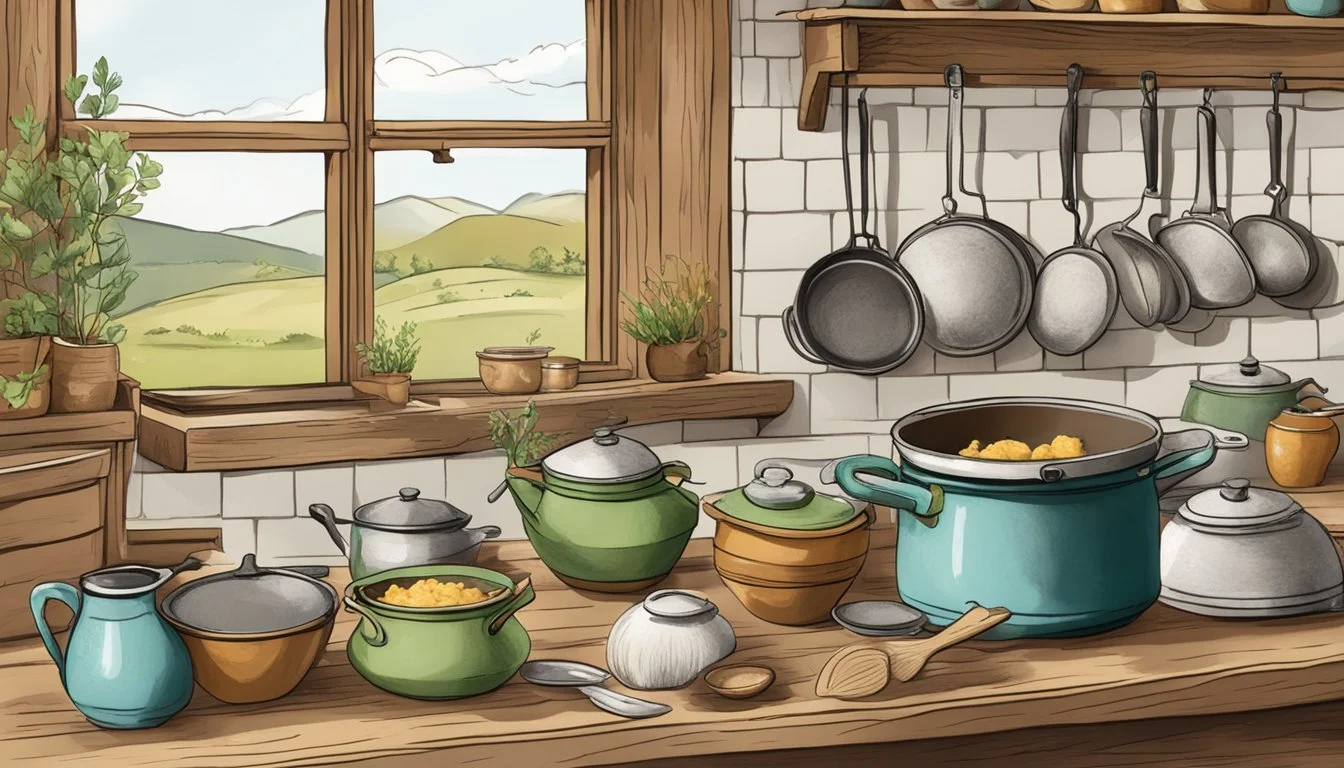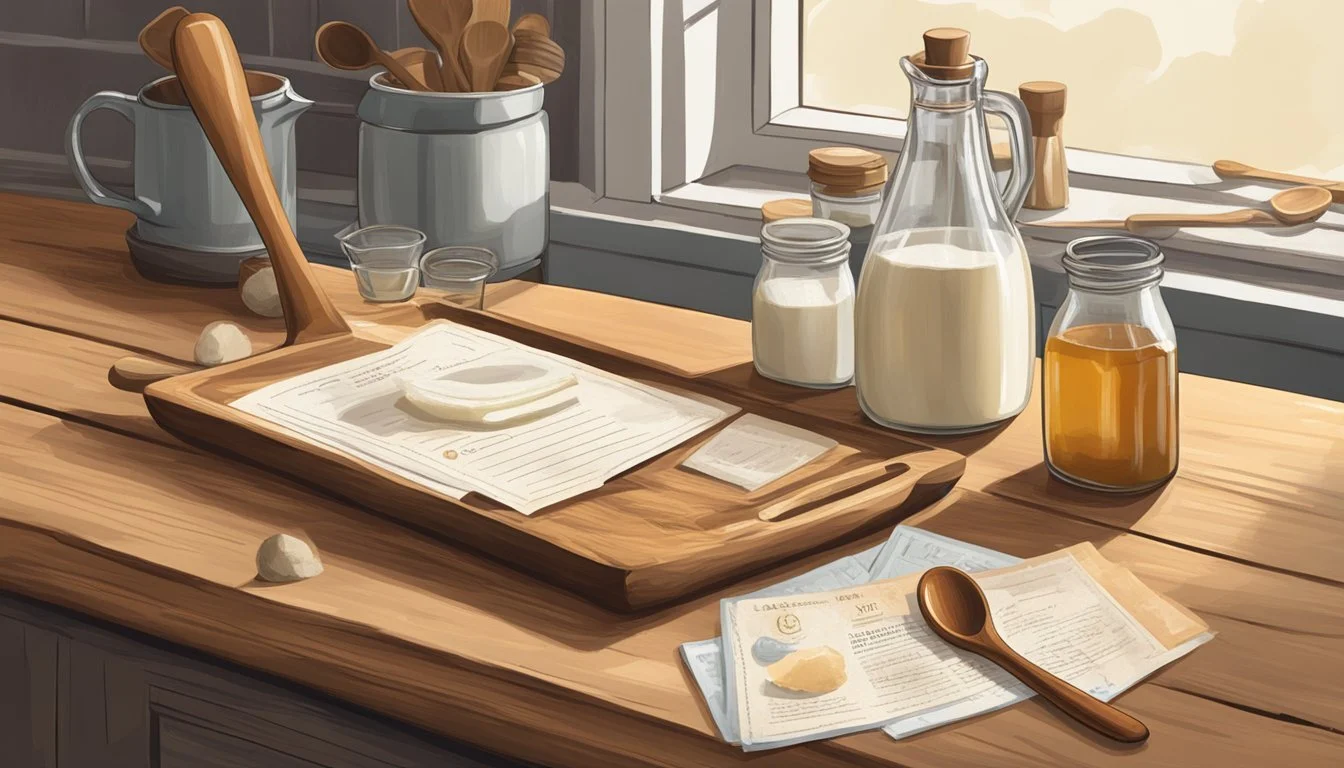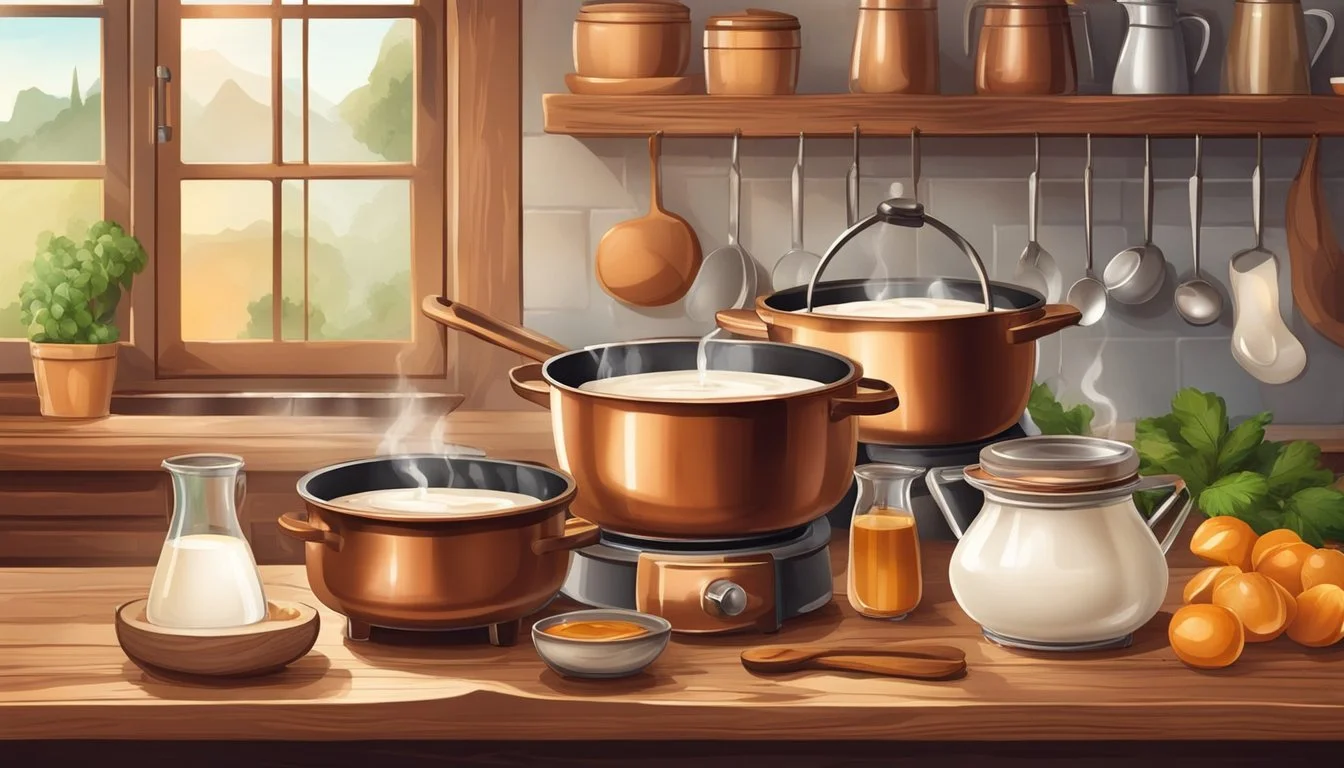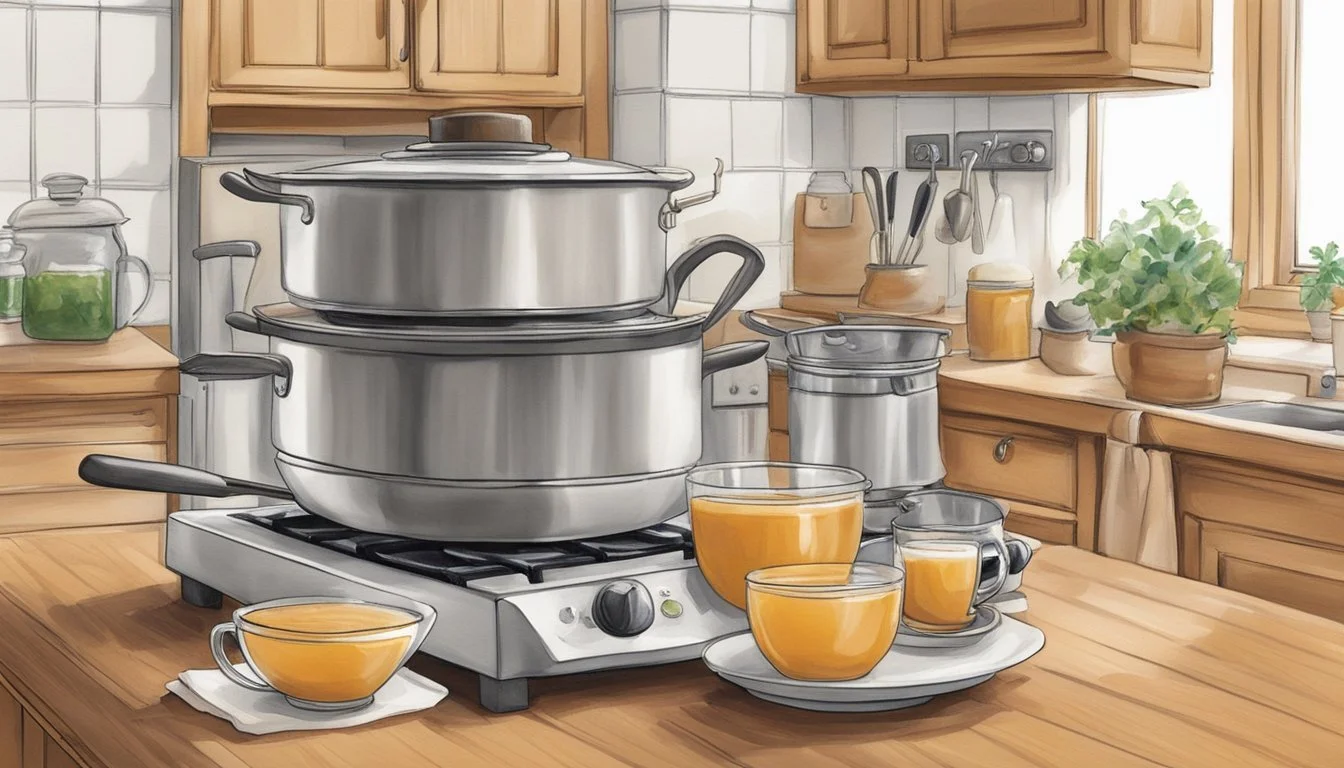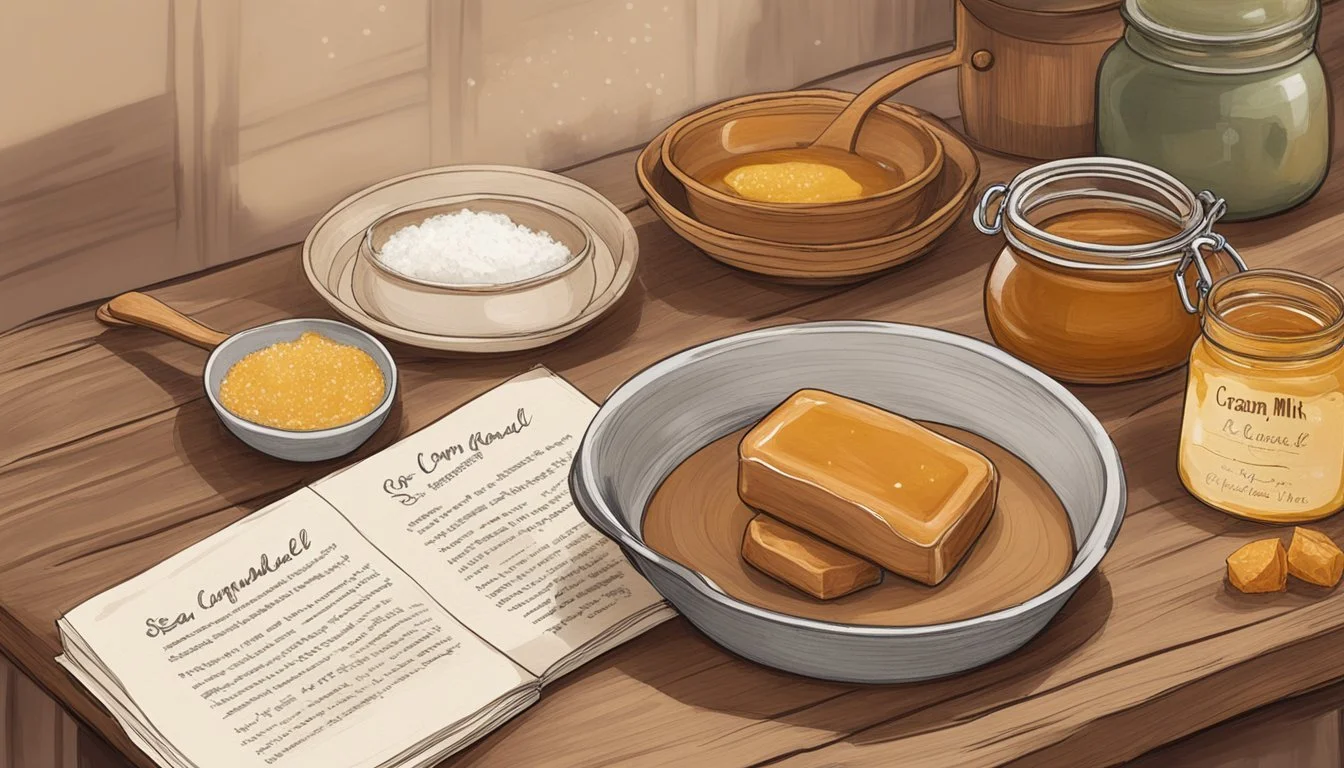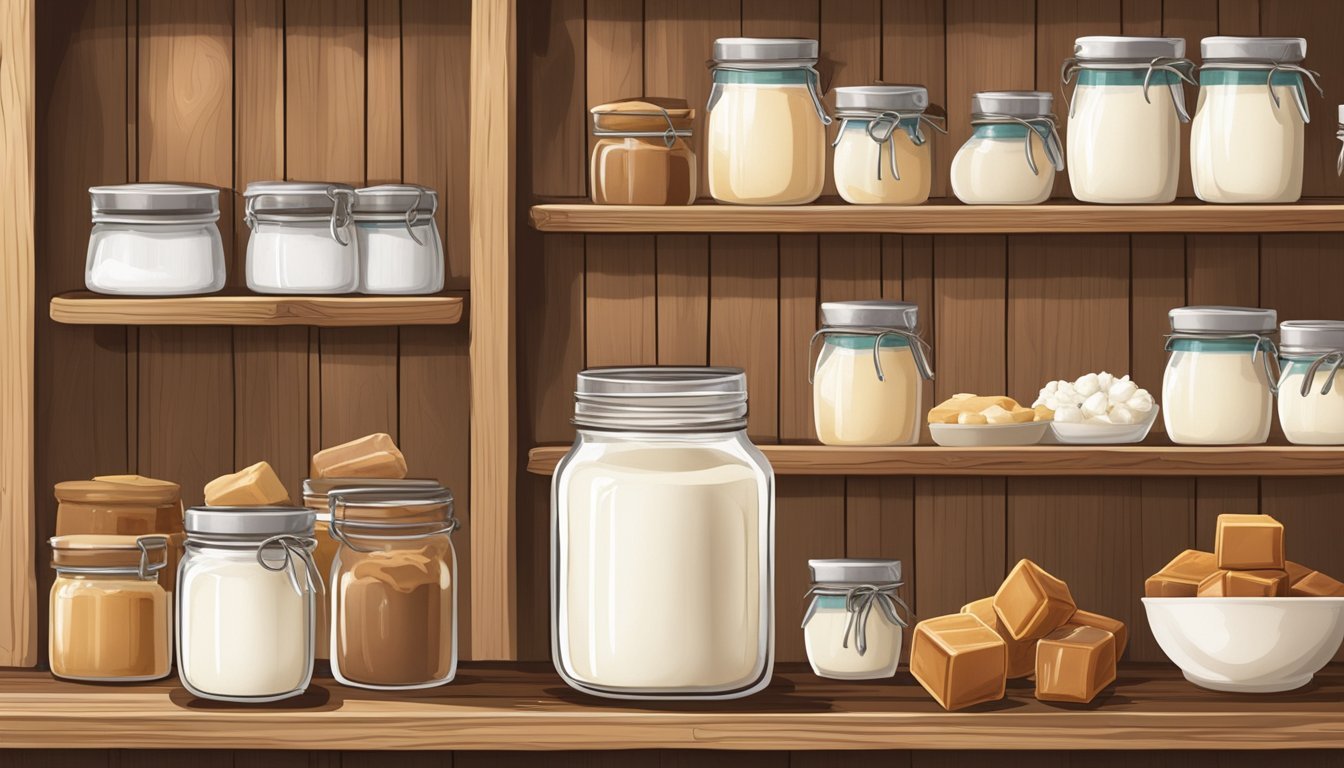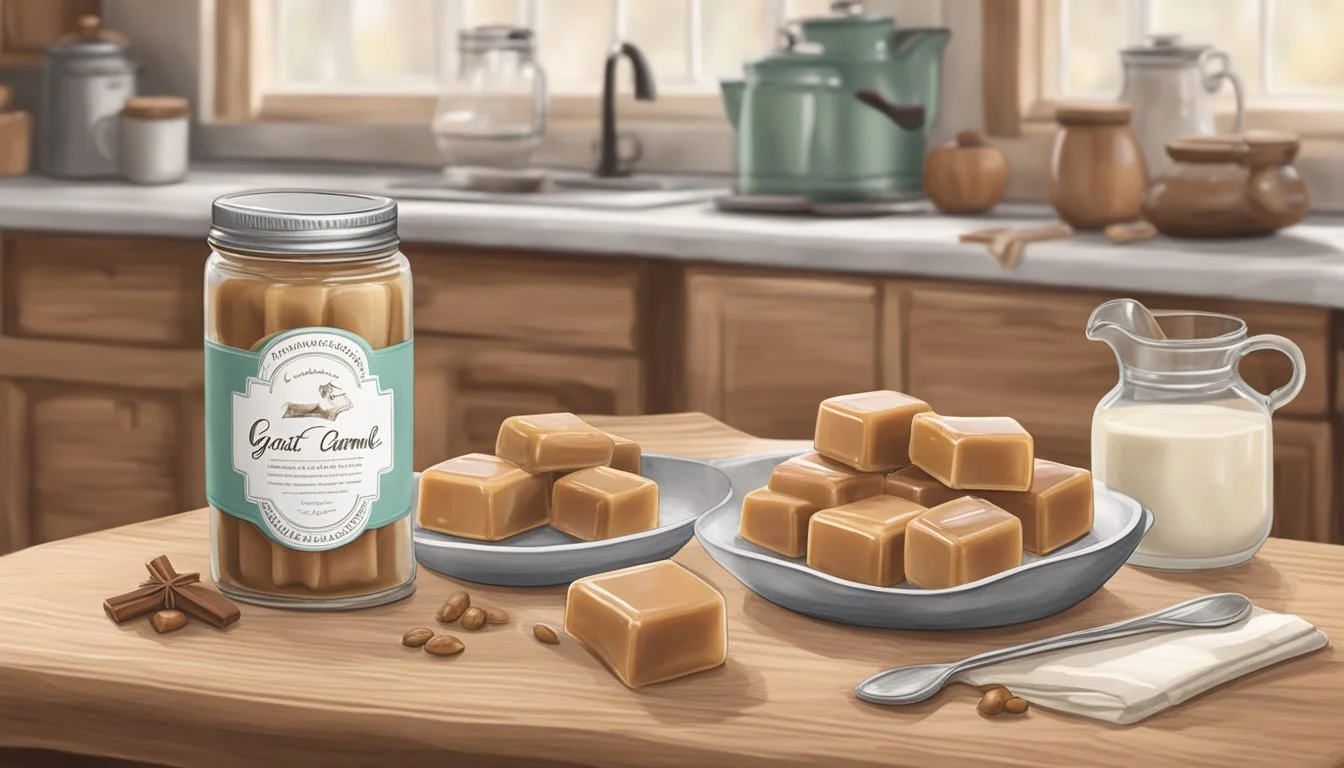The Secret to Creamy Goat Milk Caramels
Unveiling a Treasured Family Recipe
The allure of goat milk caramels lies in their unique, creamy texture and the deep, rich flavor that can only come from the use of high-quality goat milk. This dairy variant offers a distinct taste profile that sets it apart from traditional cow milk caramels. The secret to achieving the perfect consistency and flavor in these sweet confections may very well be found in a treasured family recipe passed down through generations, now finally being shared with the world. Authentic goat milk caramels are a testament to the time-honored techniques that emphasize patience, precision and the right blend of ingredients.
Creating the ideal caramel is both an art and a science, requiring one to manage the delicate balance of sugar and milk, and the process is heightened when goat milk is the dairy of choice. A family recipe for goat milk caramels often includes a specific method for combining these ingredients, a particular cooking temperature, and a set time for stirring the mixture. This delicate process ensures that each batch has a smooth, melt-in-your-mouth quality and a sweet, nuanced flavor profile that celebrates the natural taste of goat milk.
Revealing the secrets behind these delectable treats not only provides insight into the nuanced craft of caramel-making, but also showcases the versatility of goat milk in creating classic desserts. Whether one is a seasoned confectioner or a curious home cook, understanding the key components of this special recipe opens up a world of culinary possibilities. It invites sweet tooths and dessert enthusiasts to explore a sublime alternative to conventional caramels and to savor the rich heritage encapsulated within each bite of creamy goat milk caramel.
The History and Significance of Goat Milk Caramels
Goat milk caramels are a sumptuous treat with a rich history, offering a deeper, more complex flavor profile than their cow milk counterparts.
Defining Goat Milk Caramel
Goat milk caramel is a type of confectionery made primarily from goats milk. Unlike traditional caramels, which are often made with cow's milk or cream, goat milk imparts a distinctive tang and creamy texture. The process of making goat milk caramel typically involves slowly cooking down the milk with sugars until it reaches a thick, sticky consistency.
Origins and Traditional Uses
The tradition of goat milk caramel is believed to parallel the famed dulce de leche, a sweet, milk-based sauce popular in Latin America. One regional variation of this is cajeta, a Mexican caramel made specifically from goat's milk. Originating from the colonial era, cajeta was developed in the city of Celaya in the Mexican state of Guanajuato and has since become a staple sweet in Mexican cuisine. It's traditionally served with pancakes, churros, or as a filling for various pastries.
Key Ingredients for the Perfect Caramel
The foundation of any exceptional goat milk caramel lies in its carefully selected ingredients: fresh goat milk, the right blend of sweeteners, and high-quality butter enhanced with a touch of sea salt. Each component plays a pivotal role in creating the creamy, rich flavor and texture that distinguishes these caramels.
Understanding the Role of Goat Milk
Goat milk is the star ingredient, providing a distinctive creamy taste and velvety consistency to caramels. It's essential to use fresh goat milk as it contributes to the creamy texture and characteristic taste.
Sweeteners and Their Impact on Flavor
Caramels typically include a variety of sweeteners, each imparting unique flavors. White sugar and brown sugar offer foundational sweetness, with brown sugar adding a hint of molasses. Honey can be used to bring a subtle floral note, while heavily cream enriches the mixture. Quality sweeteners ensure a balanced and full-bodied flavor.
The Importance of Quality Butter and Sea Salt
Butter adds a velvety richness, and using high-caliber butter ensures a smoother texture. Sea salt is integral, not just as a seasoning, but also to enhance and balance the sweetness. A pinch of sea salt, sprinkled on top, can transform a good caramel into a great one. The inclusion of vanilla or a scraped vanilla bean adds an aromatic warmth to the final product.
Tools and Equipment Essentials
Creating creamy goat milk caramels requires precision and the right set of tools. Without these essentials, achieving the perfect consistency and texture can be a challenge.
Choosing the Right Pot and Thermometer
A heavy-bottomed pot ensures even heat distribution, preventing the sugars from scorching. It's essential to avoid using thin pots that can cause the caramel to burn. Size matters as well: it should hold at least four times the volume of the caramel mixture to prevent boiling over.
A candy thermometer is non-negotiable when making caramels. Accurate temperature readings are crucial since a few degrees can make the difference between soft, chewy caramels and hard candy. Look for a thermometer that clips to the side of the pot and has a clear, easy-to-read dial or digital display.
Preparing Your Baking Dish and Storage Items
Before beginning the caramel-making process, one must prepare a baking dish properly. Lining it with parchment paper or wax paper ensures an easy release of the caramels once they've set. Ensure the paper extends up the sides to act as handles for easy lifting.
For storage, caramels can stick to each other, so have wax paper strips ready to individually wrap the caramels. If planning to present or sell them, consider silicone candy molds or candy molds for consistent, professional-looking shapes.
One should gather other items such as measuring cups for precise ingredient portions, a sturdy wooden spoon for continuous stirring, and oven mitts to protect against the high heat. With these tools and careful attention, anyone can produce delectable goat milk caramels.
The Cooking Process
In making creamy goat milk caramels, controlling the temperature and achieving the right consistency are critical. Attention to detail can prevent common pitfalls that may arise during the cooking process.
Mastering the Temperature and Consistency
To achieve the perfect caramel, one must strictly monitor the temperature. The mixture should be brought to the boil on the stovetop, with a candy thermometer partly submerged to monitor the process. The ideal temperature to aim for is 248 degrees F; going beyond this could lead to a burnt taste, while lower temperatures may result in a too-soft caramel. Once pulled off the heat, the mixture should be allowed to cool at room temp before placing it in the refrigerator to set.
Avoiding Common Mistakes
During the boiling stage, it's essential to stir constantly to prevent the sugar from sticking and getting a grainy texture. Always use a pot with a heavy bottom to ensure even heat distribution and avoid scorching. If the sugar crystallizes, the caramels will turn out grainy, not creamy. Stir the liquid mixture gently; vigorous mixing can incorporate too much air, leading to an improper texture. Remember that after reaching the ideal temperature, it must cool down calmly; hastening this stage can affect the final texture.
Step-by-Step Instructions for Goat Milk Caramels
Ingredients:
Sliced butter
Cream
Brown sugar
Corn syrup or honey
Vanilla extract
Salt (flaky sea salt preferred)
Equipment:
Square baking dish
Parchment paper
Heavy bottom pot
Candy thermometer
Wooden spoon for stirring
Method:
Prepare a square baking dish by generously greasing it and lining with parchment paper, creating "handles" for easy removal.
In a heavy bottom pot, combine sliced butter, goat milk, cream, and brown sugar. Opt for corn syrup or honey, as preferred.
Attach a candy thermometer to the pot. Over medium-high heat, cook the mixture, stirring constantly to prevent scorching.
Monitor the temperature closely. Once it reaches the soft ball stage, typically around 238° to 240°F (114° to 116°C), immediately remove the pot from heat.
Carefully stir in the vanilla extract into the caramel mixture for that quintessential flavor.
Transfer the caramel into the prepared baking dish, spreading it evenly.
Let the caramel cool until it sets, which can take a few hours at room temperature. Optionally, they can sprinkle salt over the top for a sweet and savory twist.
Once the caramel is set, use the parchment paper handles to lift it from the baking dish. Cut into pieces of desired size.
These homemade caramels highlight the creamy richness of goat milk, enhanced by the smooth subtlety of vanilla and the contrasting zing of sprinkled salt. With patience and attention to detail, anyone can elevate their confectionary skills with this caramel recipe.
Customizing Your Caramels
Crafting the perfect goat milk caramel offers endless opportunities for customization. By infusing flavours like chocolate or espresso, and incorporating textures with additions like nuts or fruit, every batch can be a unique gourmet experience.
Variations with Chocolate, Coffee, and More
Chocolate: Elevate the traditional caramel by melting in high-quality chocolate during the cooking process. Dark chocolate can add richness while white chocolate can impart a creamy sweetness.
For Espresso Lovers: Adding a shot of espresso or a tablespoon of finely ground coffee to the caramel mixture introduces a robust depth, perfect for coffee aficionados.
Other Bold Flavors: Drizzle bourbon for a smoky kick or fold in vanilla extract for a classic twist. Sprinkling flaky sea salt over the finished caramels not only adds texture but also enhances their flavor profile.
Adding Nuts, Fruits, and Spices
Nuts: Stirring in toasted almonds or other nuts imparts a delightful crunch and nuttiness. Ensure nuts are evenly distributed for a consistent bite.
Fruits: Dried fruits (What wine goes well with dried fruits?) such as apricots or cherries can be chopped and mixed in, creating pockets of tart sweetness that balance the rich, creamy base of the caramels.
Spices: Incorporation of spices like cinnamon can create a warm and comforting flavor profile, complementing the already complex taste of goat milk caramels.
Lastly, pair these custom caramels with other desserts such as cake, ice cream, or pie to enhance the overall dining experience. Each element can be adjusted to suit specific palates and preferences, making goat milk caramels a versatile treat for any occasion.
Pairing and Serving Suggestions
Creamy goat milk caramels are a versatile treat that can elevate a variety of desserts and snack platters. Their rich, tangy sweetness pairs well with the boldness of certain beverages and the subtlety of various desserts. Proper presentation enhances their delectable appeal.
Complementary Foods and Desserts
Coffee: A bold espresso or a cup of dark roast coffee contrasts beautifully with the sweetness of the caramels.
Cheesecake: Crumbled goat milk caramels make an irresistible topping for a classic cheesecake.
Desserts: Serve these caramels with an assortment of desserts; they complement the lightness of crepes or add a surprise inside cookies.
Fruit: Pair these caramels with a fresh fruit platter; the tartness of apples and pears balances the rich caramel flavor.
Presentation and Garnishing Tips
Candy Presentation: Offer individual caramels on a decorative plate, each wrapped in clear or personalized paper twist wraps.
Garnishing: For a perfect finish, sprinkle sea salt over caramels served alongside a dessert or as a standalone candy.
Scoop and Serve: For a casual gathering, provide a scoop for guests to serve themselves the caramels from an attractive jar or bowl.
Dessert Topping: When used as a topping, chop the caramels into small chunks as a unique addition to ice cream or yogurt.
Storage and Shelf Life
Proper storage is pivotal to enjoying creamy goat milk caramels at their best. Prolonging the shelf life of these sweets involves maintaining them at optimal temperatures and using the right materials for preservation.
Optimal Conditions for Preservation
To ensure the creamy texture and rich flavor of goat milk caramels remain intact, they should be stored in a cool, dry place away from direct sunlight. Ideally, caramels should be kept at room temperature, between 60-70°F (15-21°C). For best results, caramels should be wrapped individually in parchment paper or wax paper to prevent sticking and then placed in an airtight container to safeguard against humidity and odors.
Freezing and Refrigeration Tips
When dealing with an abundance of goat milk caramels, refrigeration or freezing can extend their shelf life. For refrigeration, ensure the caramels are tightly sealed in an airtight container; they can remain refrigerated for up to two weeks. If one opts for freezing, securely wrap the caramels in parchment paper and then place them in a zip-top bag before freezing. To transfer them back to room temperature, thaw the caramels in the refrigerator for several hours to prevent condensation and maintain their creamy texture.
Packaging and Gifting Ideas
Presenting homemade goat milk caramels as gifts requires creativity and attention to detail in both wrapping and containers to showcase their artisanal charm.
Creative Wrapping Techniques
Wax Paper: A traditional and practical wrapping material, wax paper not only protects candies from sticking together but also provides a classic look. For a homely touch, one can twist the ends of the paper after wrapping each caramel, creating candy-shop appeal.
Decorative Elements: Visit a local craft store to gather twine, ribbons, or stickers. By adding these embellishments to the individually wrapped caramels, givers can personalize the gifts and make them festive.
Finding the Right Containers
Glass Jars: They are excellent for putting the spotlight on the caramels. Layering the sweets inside can turn a simple jar into an elegant display that is both pleasing to the eye and functional.
Custom Boxes: Those looking for a more personalized container can opt for custom-made boxes. They come in various sizes and can often be imprinted with a design or message in line with the gift-giving occasion.
Utilizing these ideas, one can transform homemade goat milk caramels into thoughtful and visually appealing gifts.

